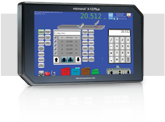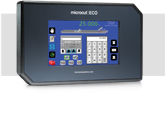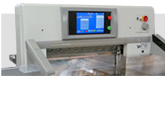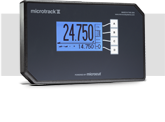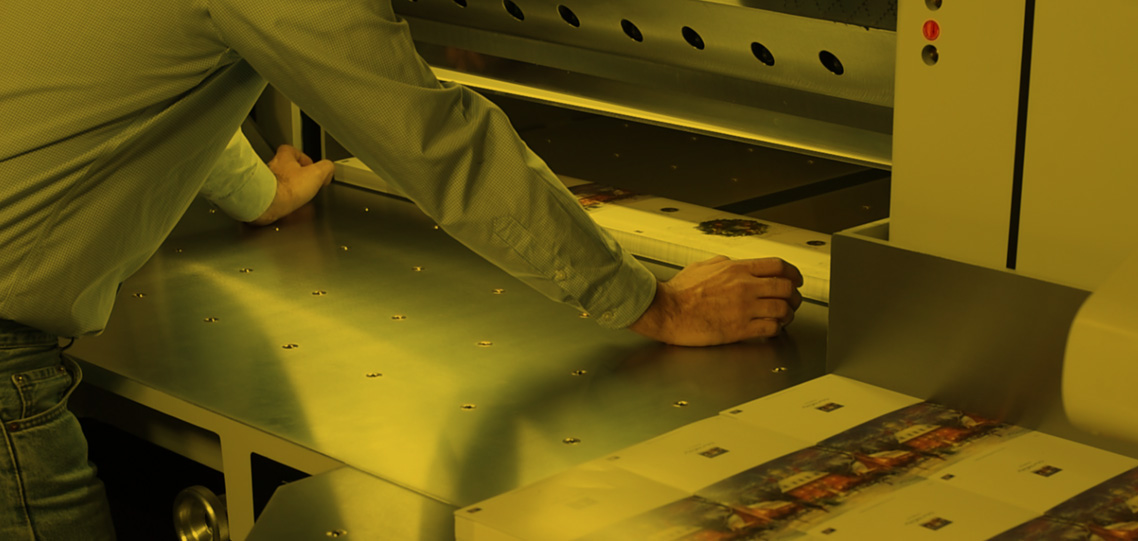Guillotine paper cutters are the workhorses of print finishing and packaging operations. But the precision and power in their operation brings risk, which is why stringent safety regulations exist. As we continue into 2025 and beyond, understanding current safety standards isn’t just a box to check. It’s a way to protect your team, stay compliant and keep production running without costly surprises.
This helpful guide will review current safety standards from OSHA, ANSI and the CE Machinery Directive. You’ll also learn what to do if you suspect a compliance issue and how Papercutters.com can help keep your machines and your team safe.
Safety Standards Aren’t One-Size-Fits-All
Regulations on guillotine paper cutters vary according to their base of operations. A machine that’s compliant in Europe might not meet U.S. standards and vice versa. That’s why it’s necessary to check local laws in addition to manufacturer specs when evaluating equipment or updating your shop’s safety plan.
Industry regulations evolve and staying current can mean the difference between a safe facility and a serious liability. Make it a habit to check for the most up-to-date information from regulatory bodies like the Occupationial Safety and Health Administration (OSHA) or the European Agency for Safety and Health at Work.
OSHA Regulations (United States)
OSHA expects proper guarding, operator training, and documented maintenance. Facilities found in violation may face fines or, even worse, worker injuries that could have been prevented.
Of all OSHA’s primary requirements for safe guillotine cutter operation in the United States, these two are the standouts:
-
Two-Hand Control: This system requires that the operator use both hands and keep their hands a safe distance from the blade when cycling the cutter, minimizing the risk of injury.
-
Anti-tie down Feature: The machine's cut controls must be designed in a way that will not allow the elimination and or bypassing of one or more of the cut buttons from being pressed for operation. Cut buttons must be of a design and spaced far enough apart that would require them to be pressed and monitored within a preset time of each other, as well as not allow an operator to use any other part of his/her body to engage the cutter without using their hands
CE Machinery Directive (European Union)
European operations have followed a different, but equally rigorous, set of standards since the introduction of the Machinery Directive 2006/42/EC in 1995. These regulations have significantly advanced the standardization of safety standards across the European Union (EU).
For guillotine paper cutters, this means that machines must be built to prevent accidental injuries, with protections that include:
-
Built-in safeguards to prevent access to hazardous machine parts
-
Clearly labeled emergency stop functions
-
Documentation and operator instructions are included with the equipment
CE compliance provides consistency across EU markets, giving buyers and operators peace of mind. CE standards don’t automatically satisfy OSHA or ANSI regulations, so cross-checking is required if you're working across regions.
ANSI B-65.3 (United States)
The American National Standards Institute (ANSI) developed ANSI B-65.3 specifically for guillotine paper cutters. It incorporates many of the principles from the CE standards and expanding on OSHA requirements with additional focus on:
If you’re considering purchasing new equipment or upgrading existing machines, check for their ANSI B-65.3 compliance to future-proof your facility’s safety protocols.
What to Do If You Spot a Safety Issue
Even in the best-run facilities, things can slip through the cracks. Maybe a cutter no longer passes inspection or an operator notices something is off. Whatever the case, if you suspect there is a compliance violation don’t wait. Take action by following these guidelines.
Step 1: Stop and Document
-
Shut down the machine: If there's any concern about safety, shut the equipment off.
-
Documentation: Document specific details of the incident in writing and by taking photos, including where and when it occurred and what, if any, safety risks were associated.
Step 2: Perform an Internal Check
-
Internal Audit: Check the machine for its compliance with safety standards and requirements, including those from OSHA, ANSI and CE.
-
Equipment Manual: Check the manufacturer’s manual to confirm the safety features that should be in place and evaluate whether they were followed.
-
Consult Experts: If the internal review is inconclusive, bring in a trained technician to conduct a more comprehensive inspection of the equipment.
Step 3: Report the Problem
-
Inform Senior Management: Report any safety violations to the appropriate member of senior management. They can coordinate next steps, whether that means calling the manufacturer, scheduling an audit or reaching out to a regulatory agency.
-
Notify the Manufacturer: Contact the manufacturer for any issues due to manufacturing defects or if there is a broader compliance or technical question.
-
Consult Regulatory Bodies: If there is a potential violation of national safety standards, including those put in place by OSHA or ANSI, refer to them directly for proper guidance and next steps.
-
Official Reporting: Some regulations require formal reporting of compliance violations. Understanding them is vital for legalities and safety assurance.
Regulatory compliance certainly helps in avoiding fines, but it’s really about protecting your people and your reputation. Guillotine paper cutters can be dangerous in the wrong hands or without the right safeguards. But with the proper knowledge and partners, you can create a safer, more compliant, and more productive operation.
Partnering for Safety
Staying in compliance can be complex, especially as standards evolve and equipment ages. That’s where we come in.
Papercutters.com helps plant managers, safety officers and technicians navigate regulations, spot risk factors and keep machines running safely and efficiently. Whether you need a one-time audit, technical support or help upgrading your equipment to meet 2025 standards, our team is ready to assist.
Contact us to schedule a safety check or talk through your facility’s needs.


